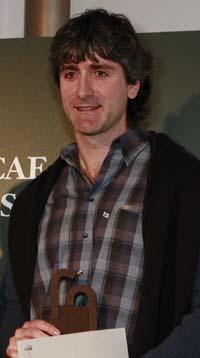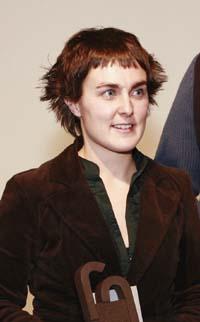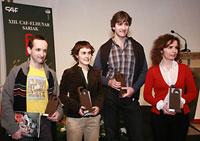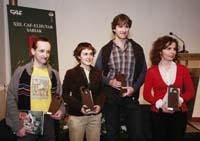Prize-proximity
2007/04/01 Roa Zubia, Guillermo - Elhuyar Zientzia Iturria: Elhuyar aldizkaria
1st prize: Deaths in the channels. The black effect of the 'green' energy

Author: Miguel Mari Elosegi Irurtia
It is a rather big excuse. Hydroelectric power has its advantages and drawbacks. We have known one. If this channel theme is not properly taken care of, it can be a little black. The question is that to generate electricity they need channels, divert water through the river, drive it through the channels and then introduce it into a pipe and make it jump from top to bottom to move the turbine. I have always listened to friends and pastors: "I do not know who has lost a sheep, it has fallen to the bed" (we say to the channel).
One day I found myself with a sheep and another animal, and then we started to think about what the problem is, does it fall one a year or falls one a week? Start of follow-up. Immediately we realized that in some water courses nothing fell, and in others much. Why? Some were covered, were closed, had ramps, corridors... They were minorities. In them things were going quite well. But other times a lot of animals fell. In the latter we make the greatest effort. Every week we went to three channels, four alternate years. Many animals fell. I mention above all the sheep, but everything falls. Anything that circulates through the mountain can fall.
It is the vertical wall of the channel. When an animal falls, it usually cannot leave. The lizard does come out, and I don't know what other animal can come out. The remaining majority falls and does not leave. They fall because access to the bed is not cut, there is no intermediate barrier.
I expect it. The article is positive because I saw good will; moreover, it was not only "blah, blah, blah and leave it alone." Something is being done. However, the problem still needs something else, let's take it seriously and see if we can't fall any. It will be difficult, but we know the way.
2nd Prize: Competition between sexes and besugo

Author: Ibon Cancio Uriarte
Last year I suffered a torture that has belonged to my son: he likes the movie Nemoren bila. The main message that appears is the mystique of fatherhood; how Nemo's father goes in search of his son, etc. I do not work directly with this species of fish, but I know that it is a special species, lives in couple in an anemone. However, there are few anemones in the place where they live and many specimens of this species are forced to live outside the anemones. If something happens to a couple, in the case of Nemo, to the female, the person who lives outside acquires that place of residence. It is usually an immature male that becomes female. I tell my son that the story of Nemo is not possible (he is two years old, he does not understand). I wrote the article with the intention of explaining it.

3rd Prize: What are you looking at? Looking at the eyes
Author: Arantxa Villanueva Larre
Many years ago I started working with this type of systems. If we record with a camera the images of the eye, these allow us to know where the person looks. After all, it records the movements of the eye, the point of view of the person, which has several applications. In the article I have not explained the concrete operation but its applications.
They have two types of applications. On the one hand, diagnostic applications. The eye movement is recorded, for example, while the person looks at a web page and the page designer can know what he has looked at and what not. On the other hand, it is applied to interactive uses. For example, these systems help disabled people to use the computer. They open a communication channel.
Prize to the youngest: Waterproof sheet: new bike

Author: Goretti Goikoetxeaundia Garmendia
Almost all of us have ever seen a waterproof sheet. In buildings, for example, it's easy to see workers on the roofs, with a black foil forwards and backwards, trying to glue the plate with a bun. We are studying these plates in our research team.
A component of these waterproof sheets is a polymer. It is usually a rubber or polypropylene. We have added the polymer EVA, that is, the plastic used in greenhouses, but recycled. This greenhouse plastic can not be reused in greenhouses since it has lost properties. We use it to change the bitumen.

Gai honi buruzko eduki gehiago
Elhuyarrek garatutako teknologia





